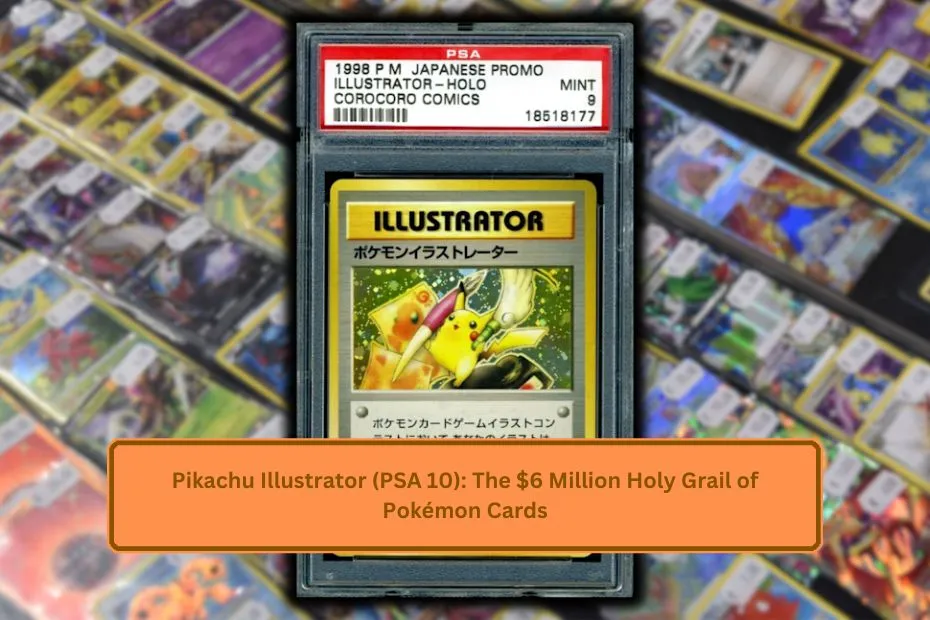The Rise of Lugia: Why a Gen 2 Icon Now Commands $150,000
The Pokémon Trading Card Game (TCG) has witnessed explosive growth in recent years, with collectors and investors alike diving into the market. Amidst this frenzy, a majestic beast from the second generation of Pokémon has taken center stage — Lugia. Known as the guardian of the seas and the mascot of Pokémon Silver, Lugia has always held a revered place in fans’ hearts. Today, its 1st Edition Neo Genesis holographic card has rocketed in value, with gem-mint copies now commanding up to $150,000.
But what exactly propelled this card — once just another powerful holo — to elite collector status?
A Legendary Debut: Neo Genesis and the Arrival of Lugia
Lugia made its TCG debut in the Neo Genesis set, released in late 2000 in the U.S. This was the first set to introduce Generation 2 Pokémon from the Gold and Silver Game Boy games. Lugia, one of the most iconic Legendary Pokémon from this era, was prominently featured as a holographic Rare card.
The Neo Genesis set was notorious for its print quality issues, making mint-grade cards extremely hard to find. Centering problems, edge wear, and holo scratches plagued many cards right out of the pack. As a result, PSA 10 (Gem Mint) copies of 1st Edition Lugia are exceptionally scarce — and thus, incredibly valuable.
Rarity, Nostalgia, and Condition: Why the Card Skyrocketed
Three major factors explain Lugia’s meteoric rise in the collector world:
Scarcity in High Grades
Despite its relative print run, only a tiny number of 1st Edition Lugia cards have earned a PSA 10. As of 2025, fewer than 50 copies are graded Gem Mint — and that number isn’t rising quickly due to the difficulty in finding pristine condition cards from that era.
Nostalgia-Driven Demand:
Millennials who grew up with Pokémon Silver, the Pokémon 2000 movie, and the Johto region now have disposable income. Lugia, who starred in both the game and the film, evokes powerful memories. This emotional connection plays a huge role in driving demand and price.
Investor Interest in Iconic Cards:
As Pokémon cards have become alternative assets, high-profile investors and influencers have poured money into “blue-chip” cards like 1st Edition Charizards and Lugias. These cards are seen not just as collectibles, but as long-term investments with appreciating value.
Pop Reports and Price Records
According to PSA (Professional Sports Authenticator) data:
- There are over 1,200 Lugia 1st Edition cards submitted for grading.
- Fewer than 50 have received a PSA 10 rating.
- PSA 9s (Mint condition) typically sell for $7,000–$15,000, depending on the market.
- The highest confirmed sale of a PSA 10 Lugia was in late 2023, with one selling for $144,300 at auction.
The rarity of the grade and iconic status of the Pokémon combine to make this one of the most expensive cards outside the Charizard line.
Artwork and Design: Aesthetic Power
The original Lugia card was illustrated by Hironobu Yoshida, who captured the psychic-flying powerhouse in mid-flight, set against a shimmering holo background. Unlike later cards with dynamic action shots, this pose is calm and imposing, which adds to its aura of mystery and majesty.
The silver border of the Neo Genesis set complements Lugia’s silvery-white color palette perfectly, reinforcing the Gen 2 theme and matching the aesthetic of Pokémon Silver.
Lugia vs Charizard: A Rival for the Crown?
Charizard has long dominated the Pokémon TCG market, but Lugia’s recent climb has sparked debate: Could Lugia be the Gen 2 GOAT?
While Charizard will likely always remain the most recognized Pokémon TCG investment, Lugia offers several advantages:
- Greater scarcity in high grades.
- Deep emotional resonance with a slightly younger generation.
- A truly limited supply, especially in PSA 10 form.
Collectors who missed out on Charizard early are now turning to Lugia as the next best thing — or even, in some cases, the preferred choice.
Investment Outlook: Still Room to Grow?
The Pokémon TCG market has cooled slightly since its 2020–2022 boom, but premium cards like 1st Edition Lugia remain resilient. Experts predict continued growth due to:
- Shrinking supply of high-grade cards.
- Increasing global interest, particularly from markets like Japan, South Korea, and Europe.
- Long-term investor interest treating cards as cultural artifacts.
A PSA 10 Lugia sold for under $50,000 in 2020. Now, it’s triple that. Could it reach $200K or even $250K in the coming years? Many believe so, especially if another Pokémon resurgence hits mainstream culture.
Lugia 1st Edition Card Value by Grade (2025 Market Estimate)
| Grade | Estimated Value (USD) | PSA Population |
|---|---|---|
| PSA 10 | $140,000 – $150,000 | < 50 |
| PSA 9 | $7,000 – $15,000 | ~300 |
| PSA 8 | $2,000 – $3,000 | ~500 |
| Raw (Near Mint) | $1,000 – $1,500 | Varies |
Final Verdict
Lugia’s 1st Edition card is more than a nostalgic collectible — it’s a powerhouse of value, rarity, and emotional appeal. For many, it’s not just a Gen 2 GOAT — it’s the GOAT of second-generation Pokémon. Its rise to $150,000 is both a testament to its iconic status and a sign of how the Pokémon card market continues to evolve.
If you’re a collector, Lugia is a must-have. If you’re an investor, it’s a prime opportunity. And if you’re just a fan of the franchise, Lugia’s soaring success is a powerful reminder of how deep Pokémon’s legacy runs — even 25 years later.


